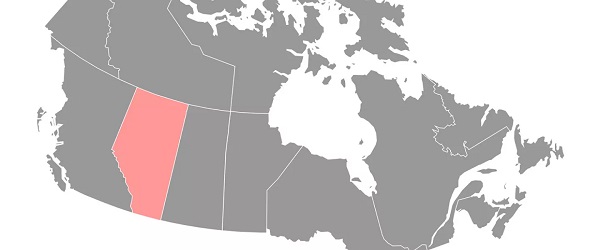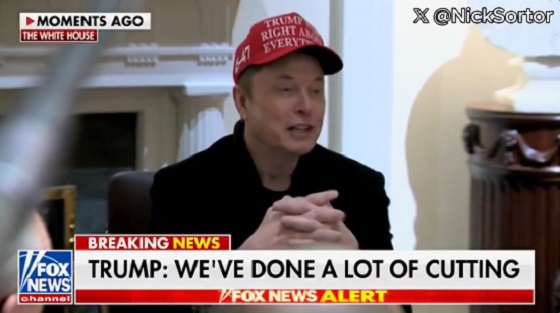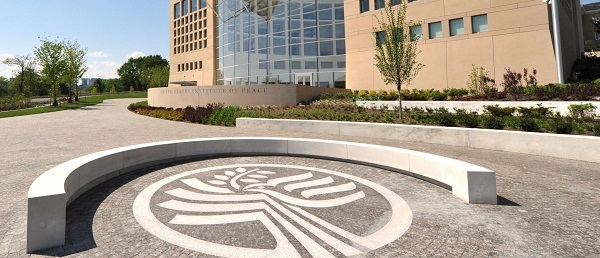National
Furey a major contrast with Trudeau on affordability

From the Canadian Taxpayers Federation
Author: Jay Goldberg
If Canadians want to find an example of a Liberal politician who cares about affordability, they should look to St. John’s, not Ottawa.
Time and time again, Newfoundland and Labrador Premier Andrew Furey has stood on the side of taxpayers.
The latest example is his government’s decision to extend its 8.05 cent per litre gas tax cut for another year.
The gas tax cut has been in place for 21 months and has saved the average two-car Newfoundland and Labrador family more than $800. Another 12 months of lower gas prices will see family savings soar to more than $1,000.
Furey first announced the temporary tax cut in June 2022 and has now extended it twice.
The Furey government has also spoken out strongly about the detrimental impact of the carbon tax on Newfoundlanders and Labradorians.
In criticizing the Trudeau government’s carbon tax late last year, Furey noted “there is no subway” for his constituents to take as an alternative to the ever-increasing costs of driving a car to get to work or to bring kids to school.
That comment was a jibe at the infamous remarks federal Finance Minister Chrystia Freeland made when encouraging Canadians who can’t afford to pay the carbon tax to bike or take transit.
Furey noted if rural Canadians don’t have other transit options – and many don’t – then “the fundamental premise on which the [carbon tax] is based is flawed.”
Furey was also a leader in calling on Trudeau to take the carbon tax off all home heating, noting repeatedly that heating one’s home in Canada in the winter is not optional.
Under pressure, Trudeau finally did so through a temporary suspension of the carbon tax on home heating oil, which is a popular method of home heating in Atlantic Canada, but not in other regions of the country.
To Furey’s credit, he continued to call on the federal government to offer relief to Canadians who don’t use furnace oil for home heating.
Juxtapose that against the policies of Prime Minister Justin Trudeau.
Without campaigning on it, Trudeau sprung a carbon tax on Canadians in 2019. He’s increased it every year since. And he plans to keep jacking it up every year until 2030.
Trudeau has tried to sell his policies by claiming most Canadians are getting more money back from carbon tax rebates than they pay in carbon taxes. Many of Trudeau’s allies have suggested that somehow the carbon tax actually is an affordability measure.
But the Parliamentary Budget Officer has laid out the truth: the average Canadian family is losing money from the carbon tax, big time.
The average Newfoundland and Labrador family lost $347 from the carbon tax last year, even after the rebates. That’s set to climb to $1,316 a year by 2030.
For years, Trudeau told us families would be better off with the carbon tax. But after pressure from Furey and other Atlantic Canadian politicians, he temporarily removed the carbon tax on home heating oil for the next three years.
If that’s not a mea culpa that the carbon tax makes life less affordable, then Santa Claus and the Easter Bunny must be real.
The broader contrast between Furey and Trudeau is their approach to cost of living. Furey looks at what’s taking cash out of families’ wallets – gas and carbon taxes – and tries to lessen that burden by fighting for lower taxes. Trudeau’s solution to make life more affordable appears to be more taxes, more spending and more debt.
The bottom line is that Trudeau, who is sinking in the polls and faces frustrated taxpayers from coast to coast, should learn a thing or two from Furey. Canadians want life to be more affordable, and that means lowering the tax burden, not increasing it.
2025 Federal Election
2025 Election Interference – CCP Bounty on Conservative Candidate – Carney Says Nothing


 Dan Knight
Dan Knight
Liberal MP Paul Chiang echoes Beijing’s hit list, suggesting Joe Tay be delivered to Chinese consulate for cash—yet Mark Carney stays silent, proving the Liberal swamp is deeper than ever.
So let’s just recap, because this is almost too surreal to believe.
A sitting Liberal Member of Parliament—Paul Chiang—stood in front of a Chinese-language media outlet in January 2025 and said that if someone were to kidnap Joe Tay, a Conservative candidate and Canadian citizen, and deliver him to the Chinese Consulate in Toronto, they could “claim the one-million-dollar bounty.” That wasn’t some fringe YouTuber or anonymous social media post. That was a sitting MP, elected to represent Markham—Unionville, who also happens to serve as the Parliamentary Secretary to the Minister of Diversity and Inclusion.
Let me be crystal clear here: that’s not just inappropriate. That’s not just “deplorable.” That’s language lifted directly from the Chinese Communist Party’s playbook. Joe Tay is on a real bounty list. Not fantasy. Not fiction. A real HK$1 million bounty placed on his head by the Hong Kong police for supporting democracy and speaking out against tyranny.
And what happens when a Canadian MP echoes that threat—on Canadian soil?
Nothing.
As of right now—this minute—Paul Chiang is still an MP in good standing in with the Liberals. Not suspended. Not removed from caucus. No RCMP probe. No parliamentary discipline. Nothing.
And the Carney campaign? The Liberal Party’s new face? Crickets. Absolute silence. Carbon Tax Carney, Trudeau’s old money-man turned globalist messiah, who’s spent the last month talking about “foreign interference” and demanding Pierre Poilievre get a security clearance? Not a word. Apparently, if a Conservative doesn’t submit to Ottawa’s surveillance state, it’s a national crisis. But if a Liberal MP plays mouthpiece for Beijing and jokes about abducting a political opponent? It’s just… Tuesday.
Imagine for a second that a Conservative MP had said anything remotely close to this—maybe even joked about placing a bounty on a Liberal politician funded by a foreign regime. Every major newsroom in the country would have declared martial law. CBC would be live for 72 hours straight. The RCMP would have launched a task force. But because it’s a Liberal, they issue a press release. A shrug. A “deplorable” comment, followed by a half-hearted apology and—get this—no consequences.
Now, contrast that with how they treated Ruby Dhalla. A former MP who dared to challenge the coronation of Carney. The party booted her from the leadership race, citing “financial irregularities.” That’s rich. They kicked her out—then kept the entrance fee. So her money’s good, just not her name on the ballot.
That’s the Liberal Party of Canada in 2025. A party so thoroughly compromised, so ideologically bankrupt, that they treat foreign bounties on Canadian citizens as a punchline—as long as the target is a Conservative. As long as the regime writing the check has the “right politics.”
And here’s the silver lining—because yes, even in this mess, there is one: we’re lucky this is all happening weeks out from the election. Because now, finally, Canadians get a front-row seat to the Liberal swamp in all its grotesque glory.
Paul Chiang joking about handing over a Canadian citizen to a foreign dictatorship? That’s not some isolated gaffe—it’s the mask slipping. And the silence from Mark “Bank of China” Carney? That’s the sound of a globalist technocrat who’s just as deep in the muck as the rest of them.
This is the Liberals unfiltered. Not the polished press conference CBC version—the real one. The one that looks the other way on foreign interference, cashes the CCP’s checks, and protects their own no matter how depraved the behavior.
So yes, it’s revolting. But it’s also revealing. And thankfully, it’s happening before Canadians head to the polls—because now there’s no excuse, no spin, no pretending. The Liberal Party isn’t just corrupt. It’s compromised. And the country can’t afford another minute of it.
Time to clean house. Time to drain the swamp—Chiang, Carney, and the whole rotten cartel.
2025 Federal Election
2025 Federal Election Interference from China! Carney Pressed to Remove Liberal MP Over CCP Bounty Remark

 Sam Cooper
Sam Cooper
“This is shocking. Mr. Chiang openly encouraged people to assist in China interference and transnational repression,”
… the bounty on (his Conservative opponent) Tay was issued by the Hong Kong Police Force under its new national security laws, because Tay runs a YouTube channel in Canada that is critical of governance imposed from Beijing.
Conservative Party leaders have ramped up demands for Prime Minister Mark Carney to remove incumbent Liberal candidate Paul Chiang in a Toronto-area riding—alleging his predecessor Justin Trudeau ignored Chinese interference in 2021—after a shocking report revealed that Chiang, in an interview with Chinese media, encouraged Canadians to help deliver a political opponent to the Chinese consulate to collect a bounty.
The explosive story broke Friday after Chiang acknowledged his comments, made in January to Ming Pao, a Chinese-language outlet, and issued an apology in a post on X. However, Carney’s ongoing silence has fueled a wave of condemnation from Conservative leaders and democracy advocates in the Chinese-Canadian community, with influential Ottawa commentators warning this could become the first serious test of Carney’s leadership—and his party’s campaign.
According to The Bureau’s analysis of prior CSIS reporting, comments by Chiang—a former police officer in the Markham area—reflect a longstanding pattern of election interference by the People’s Republic of China in Canada, including the use of Chinese-language media in Toronto, operating under consular influence, to amplify pro-Beijing narratives and promote candidates perceived as sympathetic to the Chinese Communist Party.
Former Conservative leader Erin O’Toole suggested Saturday that the riding of Markham–Unionville, where Paul Chiang unseated incumbent Conservative Bob Saroya in 2021, was among several successfully targeted by Beijing’s interference operations—part of what he says weakened key Conservative campaigns and ultimately contributed to his resignation as party leader.
“This riding was one of the worst for Foreign Interference (FI) in 2021,” O’Toole wrote on X. “Comments from the MP/Candidate confirm longstanding concerns about the result. PM Trudeau ignored FI concerns. I hope PM Carney is more serious. He cannot allow this candidate to stand.”
Chiang, the sitting Member of Parliament and a candidate for re-election, was quoted in Ming Pao suggesting individuals could “claim the one-million-dollar bounty” placed by Hong Kong authorities on Conservative candidate Joe Tay—by bringing Tay to the Chinese consulate in Toronto. According to reporting, Chiang also remarked that Tay’s criminal charge under Hong Kong’s national security law would cause a “great controversy” if Tay were elected to Parliament, before issuing his bounty comment to laughter among the gathered Chinese journalists.
Chiang issued a brief apology after the remarks surfaced on Thursday. But the backlash has only intensified, with Conservative leader Pierre Poilievre accusing Chiang of echoing Chinese Communist Party repression—and Mark Carney of turning a blind eye.
“Liberal MP and candidate Paul Chiang’s heinous call to turn over a Canadian citizen to the authoritarian regime in Beijing in return for a Chinese Communist Party bounty is no accident—it reflects the Liberals’ long-standing mockery and neglect of national security for their own partisan gain,” Poilievre said Saturday.
“Carney is weak and compromised by money his company owes Beijing. His silence on these deplorable comments says it all. Carney must fire Paul Chiang as a candidate.”

Paul Chiang campaigns with chairman of the Federation of Chinese Canadians in Markham (FCCM), which has been noted for organizing and participating in events with Han Tao, the PRC Consul General in Toronto in 2021.
Veteran democracy activist Cheuk Kwan, co-chair of the Toronto Association for Democracy in China, surfaced Chiang’s remarks Friday and called for the MP to resign.
“This is shocking. Mr. Chiang openly encouraged people to assist in China interference and transnational repression,” Kwan said. “Rather than protecting Canadians, he betrayed them and jeopardized their safety.”
Kwan noted that the bounty on Tay was issued by the Hong Kong Police Force under its new national security laws, because Tay runs a YouTube channel in Canada that is critical of governance imposed from Beijing.
On Saturday, Michael Chong—who was himself targeted by Chinese diplomats according to Canadian intelligence—added his voice to the growing chorus of condemnation.
“Paul Chiang’s support for the CCP’s illegal and unjust bounty on a Canadian citizen is shocking,” Chong said. “The CCP is a hostile regime that has interfered in our elections, kidnapped and executed Canadian citizens and remains a grave threat to Canada’s national security.”
“Carney’s silence on his candidate creates the dangerous impression that he condones this despicable suggestion,” Chong added. “If he won’t remove a candidate for calling for the involuntary return of a political opponent in the service of another country, when will he stand up against foreign interference?”
Community leaders have long alleged that Beijing has delivered voters in key Canadian ridings to support candidates seen as aligned with its interests. As Cheuk Kwan put it Friday: “China has been mobilizing voters, especially those in ridings with a high concentration of Chinese Canadians, to vote for China-friendly candidates.”
“It purportedly assisted in the campaign of Chiang to defeat a highly popular Conservative incumbent in the 2021 election,” he said.
It remains unclear exactly how O’Toole and others, including Cheuk Kwan, believe China boosted Chiang’s candidacy—but alleged interference by the Chinese consulate targeting then-Conservative MP Bob Saroya came under scrutiny during a 2023 parliamentary committee hearing.
On April 14, 2023, the Procedure and House Affairs Committee examined allegations of foreign interference in the 2021 federal election, focusing on China’s activities in the Greater Toronto Area. Conservative MP Michael Cooper testified that Saroya received a threatening message from China’s Consul General Han Tao in Toronto roughly ten weeks before the vote.
The message, Cooper said, cryptically warned Saroya that he would “no longer be a Member of Parliament after the 2021 election.” Cooper characterized it as an attempt to intimidate or interfere with a sitting Canadian parliamentarian.
The hearing also saw testimony from Katie Telford, Chief of Staff to Prime Minister Justin Trudeau, who was asked about the government’s knowledge of the incident. Telford, citing security constraints, said she could neither confirm nor deny awareness of the message, referring the committee to prior testimony from Canadian security officials.
Telford is among the former Trudeau aides who backed Carney’s leadership.
Meanwhile, an October 2022 intelligence assessment from Canadian Security Intelligence Service provides critical context that helps illuminate Chiang’s remarks to an exclusive gathering of Chinese-language journalists in Toronto.
The leaked document, analyzed exclusively by The Bureau, warns that the PRC has carried out sophisticated political interference operations across Canada, including efforts to control election narratives in Chinese-language media and promote candidates favorable to Beijing’s agenda.
The classified document is labeled “Canadian Eyes Only” and describes how “traditional and online media outlets play an important role during election periods, offering a curated communications channel between political campaigns and the general public.”
Beijing, the report says, actively targets this election coverage, seeking “to manipulate and influence key media entities, control narratives, and disseminate disinformation.”
CSIS analysts trace the PRC’s growing influence over Canada-based Chinese-language media to demographic shifts and heavily resourced state efforts to infiltrate diaspora institutions.
In the Greater Toronto Area, the report says, “30 to 40 people in Chinese media circles meet regularly to come to a consensus regarding what or how an item will be published.” These individuals “act as gatekeepers to ensure whatever is reported in Chinese-language media adheres to pro-PRC narratives.”
“In Canada, a PRC ‘takeover’ of Chinese-language media has transpired over decades, derivative of the proportion of PRC-origin individuals increasing in Canada’s Chinese communities,” the CSIS document states.
This long-term effort has enabled Chinese consulates in Toronto and Vancouver to assert control over media associations, effectively dictating editorial lines. According to intelligence cited in the document, “almost all Chinese media outlets are controlled by local media associations and essentially say the same thing.”
On Saturday night, former Alberta Premier and senior Conservative MP Jason Kenney added his voice to the growing calls for Chiang’s removal, warning that his remarks sent a chilling signal to Canadians who already live in fear of transnational repression.
“This guy simply must be fired as a candidate by his party,” Kenney wrote on X. “This is not a partisan point.”
“I have spent decades working with Canadians who support democratic reforms and human rights in China: Tibetans, Uyghurs, Falun Gong practitioners, Hong Kong democracy activists, Tiananmen Square refugees, and others,” he continued. “Almost all of them live in fear, here in Canada, that their actions will result in dangerous consequences for them and their loved ones.”
“For an MP to encourage, or even ‘joke about,’ those consequences is well beyond the pale,” Kenney added. “It is odious, a fundamental and obvious violation of Canadian values.”
Mark Carney, who assumed leadership of the Liberal Party earlier this year, now faces the first serious Chinese interference scandal of his campaign—and of his nascent political leadership. Questions are also swirling about Carney’s own financial dealings with China, including meetings in Beijing while serving as a global investment executive and dealings with Bank of China as former Bank of England governor. Weeks after one such meeting in 2024, Brookfield Asset Management—where Carney was Vice Chair—received a quarter-billion-dollar loan from Bank of China.
Despite the growing chorus of criticism against Chiang, Carney has yet to comment publicly.
Carney, who has never been elected, has also yet to be seriously examined by an aggressive news media in Ottawa, according to some critics in the Conservative Party. In its report Friday, the National Post noted that when asked for further comment, Chiang’s campaign directed the Post to the candidate’s statement on X.
-

 Health2 days ago
Health2 days agoRFK Jr. says ‘everything is going to change’ with CDC vaccine policy in Michael Knowles interview
-

 Business2 days ago
Business2 days agoLabor Department cancels “America Last” spending spree spanning five continents
-

 2025 Federal Election2 days ago
2025 Federal Election2 days agoNext federal government should recognize Alberta’s important role in the federation
-

 Addictions2 days ago
Addictions2 days agoThere’s No Such Thing as a “Safer Supply” of Drugs
-

 Economy1 day ago
Economy1 day agoClearing the Path: Why Canada Needs Energy Corridors to Compete
-

 2025 Federal Election11 hours ago
2025 Federal Election11 hours ago2025 Federal Election Interference from China! Carney Pressed to Remove Liberal MP Over CCP Bounty Remark
-

 Uncategorized10 hours ago
Uncategorized10 hours agoPoilievre on 2025 Election Interference – Carney sill hasn’t fired Liberal MP in Chinese election interference scandal
-

 2025 Federal Election2 days ago
2025 Federal Election2 days agoCanadian Banks Tied to Chinese Fentanyl Laundering Risk U.S. Treasury Sanctions After Cartel Terror Designation










